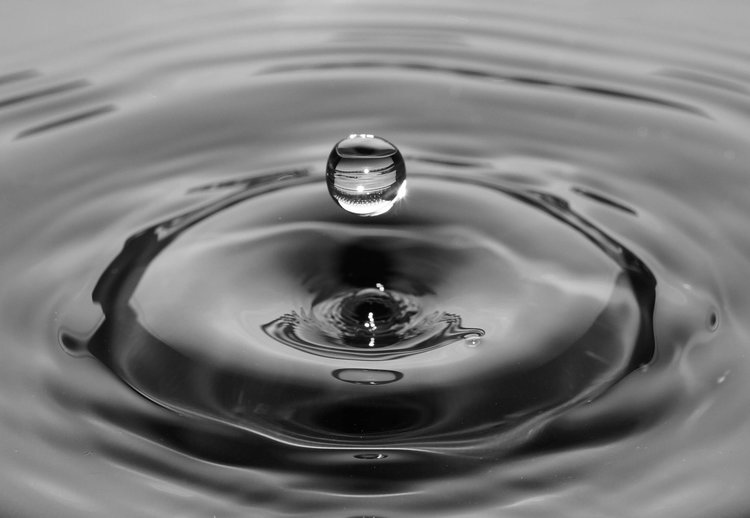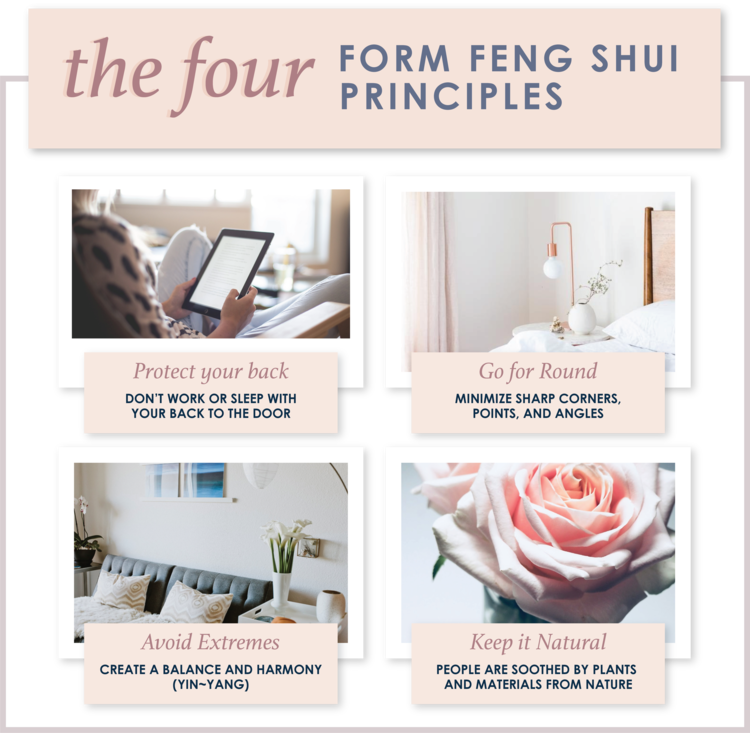“By your own efforts. Waken yourself, watch yourself. And live joyfully. You are the master.”
For many, feng shui may be a foreign concept. After studying feng shui with Cathleen McCandless and understanding its underlying principles, I’ve been able to see first hand how feng shui coupled with interior design can transform spaces and environments to create more harmony, joy and abundance in our lives.
In this blog, I am sharing 5 reasons why I believe Interior Design and Feng Shui are the perfect marriage of form, function, design and energy.

Reason #1
CORE PRINCIPLES OF FORM SCHOOL FENG SHUI AND ENERGY FLOW
Ancient Chinese masters discovered the strategic placement of buildings and elements to enhance protection and well being as early as 5000 years ago. Not much has changed since then in terms of comfort and sense of well being. Comfort is based on safety. Ever wondered why most people choose a booth over a table in a restaurant or why a bouquet of flowers makes for a more cheerful gift than a cactus? It’s all about setting our survival instincts at ease and letting nature’s beauty and spatial order allow our eyes and minds to rest.
When it comes to interior design, form school feng shui supports interior design beyond what a space looks like to how a space feels. The free and balanced flow of the life-giving energy called “qi” (pronounced: chee) is the most important aspect in Feng Shui. Feng shui supports interior design with proper natural lighting, natural textiles and materials, wall colors that support elements, intuitively positioned furniture, attractive wall art, pleasing accessories, and a lack of clutter. Without knowing anything about feng shui, many people use form feng shui principles intuitively when arranging a room and think “It just flows”. While a lack of good feng shui is often perceptible when a space feels uninviting and bleak. This is why interior design and form feng shui intrinsically go hand in hand.


Reason #2
MENTAL, EMOTIONAL, AND PHYSICAL CLARITY
Feng Shui influences are often subtle and detected merely by a sense of ease surrounding a space. Here are specific examples of how feng shui often influences interior design.
Entryways: a person feels more comfortable entering a house when the front door opens to a confined hallway or foyer instead of the entire openness of the house. The entry serves as a buffer as the senses adjust to an unfamiliar space. A smaller space like a hallway or visual barriers feel initially safer. Shelves or a sofa can help create such a buffer.
Kitchen: hanging pots and pans from the kitchen ceiling may look like a French country kitchen, but it actually feels uncomfortable for some people as it represents heavy items that could hit their heads. The same counts for a knife block stocked with sharp knives on the counter. It subliminally feels threatening. Full spectrum lighting in the kitchen prevents it from looking dingy. Round dining tables are better for conversations.
Offices: the human eye is drawn to plants and greenery because it reminds us of food harvests, shade, and shelter. Again, it’s subliminal but effective. Studies have shown that office spaces with healthy plants foster more productive and less anxious employees.
Bedrooms: when it comes to feng shui, the two most important aspects of a bedroom design is the placement of the bed. Can you see the door when laying in bed but not lay in the direct line of the door? If an intruder were to enter, you want to see them before they see you. The headboard should be solid versus with holes and spaces. People feel more relaxed when their head is protected.

Reason #3
ATTENTION TO PATTERN, TEXTURE, COLOR AND FORM
In interior design patterns, texture, color, and form are crucial elements. They all add to the completion of a room composition. Unless it’s a small or designated space, I generally recommend to keep wall colors monochromatic (versus a bold wallpaper or mural pattern) to represent a uniform canvas. Patterns are weaved in to the design through flooring, rugs, wall art, window coverings, wallpaper, and accessories. Texture and color are important elements in large furniture pieces. Again, I prefer a solid color for larger pieces of furniture since i.e. a sofa is something people keep for a long time and a versatile color can aid in the longevity of the room design. Pops of color and texture are integrated through rugs, pillows, pictures, decorative items, and even window treatments. Many people prefer seating and sleeping furniture with soft fabrics and rounded contours rather than cold click surfaces and sharp edges.
In feng shui, rounded edges are more natural and furniture with rounded edges are more inviting. Feng shui in interior decorating is all about bringing natural elements in to the mix. Patterns resembling natural shapes tend to be more relaxing than stark geometric shapes. Feng shui is big on texture and natural surfaces. A live edge table, healthy plants, a sheeps skin rug, a bowl of shells or rocks make for perfect examples of richly textured items that balance the feng shui in design. Wall and fabric colors can support a given life aspiration area like for instance blues or black in the North Career area of the space.

Reason #4
TAKE FENG SHUI TO THE EXTERIOR OF THE HOUSE
- Every visit starts with the concept of “wayfinding”. If you visit a building for the first time and you can’t find the entrance because it’s hidden in an inconspicuous place, you tend to be unsettled before you even ring the doorbell. Trimming hedges, installing signs, or giving precise directions greatly helps to ease a visitor’s first impression.
- Front Yards: would you rather approach a house or building with spiky cactus and agave plants by the front door or a luscious lawn, cheerful flower beds, and soft bushes? Beautiful front yards make any home more appealing. Meandering walkways are more interesting and attractive than straight paths. More often do we find curved paths in nature than straight ones.
- Does your house have a steep drop off in the backyard or does your apartment on the 10th floor have a glass balcony railing? Both can make for an unsafe feeling when enjoying the outdoor space. This can easily be remedied with a row of potted plants or a solid fence. When the mind has a visual barrier, it can relax and let its guard down

Reason #5
CREATE SPACES YOU WANT TO COME HOME TO
Who doesn’t like to come home to an inviting, aesthetically pleasing, and tidy home?! I want to feel happy when I approach my front door. So a tidy front yard with colorful flower beds or healthy potted plants are the way to go here. Upon entering, I want to be greeted by my carefully chosen furnishings and personal items that are arranged in a way that inspires a sense of harmony and joy in me. I don’t want to see clutter or broken items. Broken items or maintenance issues are bad feng shui for obvious reasons. Clutter is never okay in interior design and especially feng shui. It does not matter if it’s the front entrance, the garage, or backyard. Useless and unsightly items interrupt the flow of good chi (qi) and kill any beautiful design.
Entering your home or work space where everything is to your harmonious taste and functional liking is like entering a sacred space where to find solace, recharging, inspiration, human bonding and bliss. It represents the platform from which to start each day, venture out into the world and experience great things.
IN CONCLUSION…
Although they share similar principles, Feng Shui and Interior Design are somewhat different. Interior design can depend more on trends and personal tastes, however a tasteful design doesn’t necessarily translate to good feng shui. Feng shui is a system not a decor style and is more unambiguous when it comes to patterns, texture, colors, and form. It’s personal preference how far a marriage between interior design and feng shui goes, but to me interior design and feng shui are intrinsically connected. No good design can exist without the balancing elements of feng shui. It’s a holistic thing to me.
Is your home craving a refresh? Are you interested in getting started with Feng Shui and Interior Design? I am offering FREE initial Consultations to all new clients. I look forward to hearing from you!

